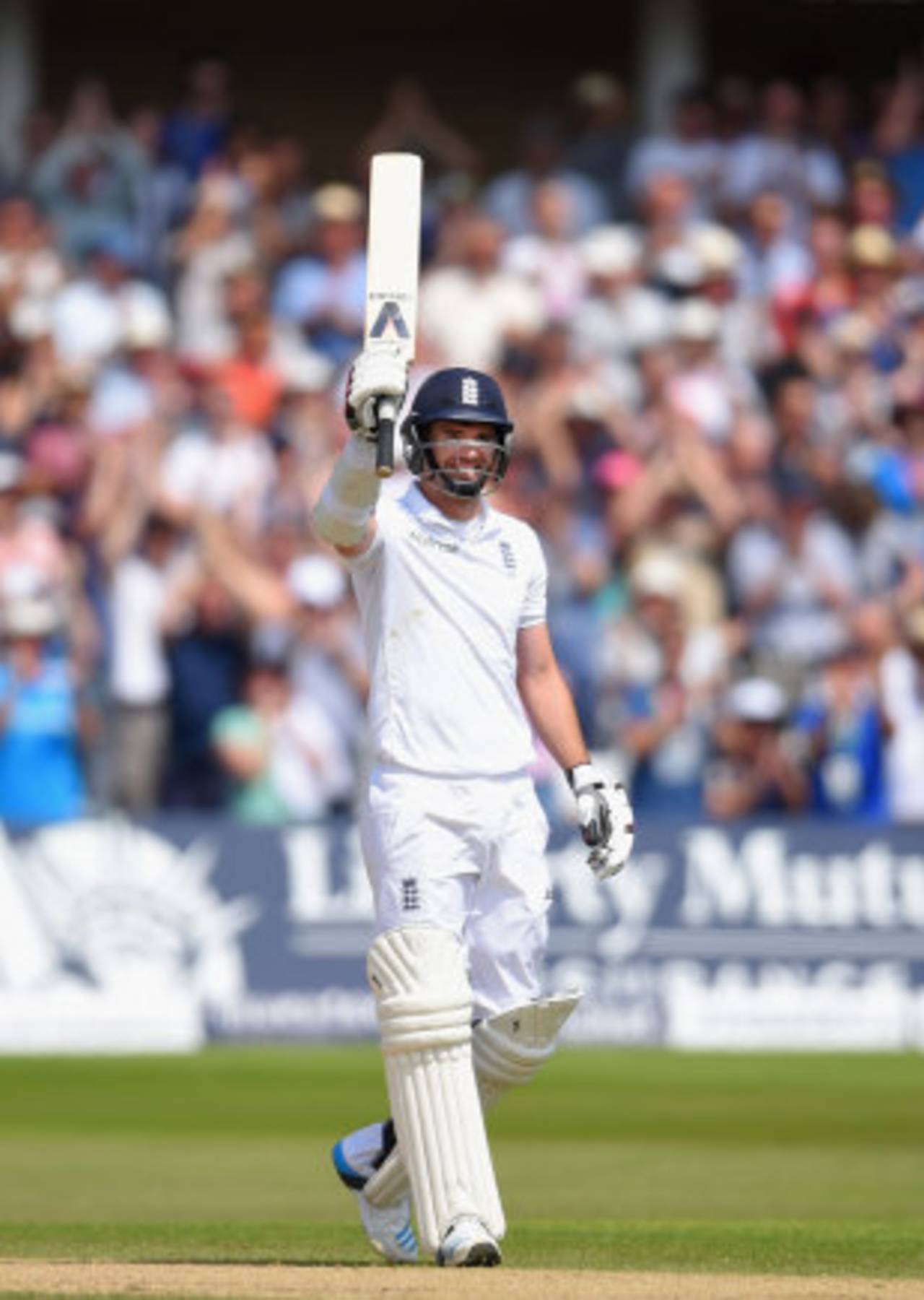A Trent Bridge extravaganza
Tail-end records set in the recent England-India Test, and double-tons by No. 7s

James Anderson's innings was the longest by a No. 11 in terms of minutes batted • Getty Images
That amazing stand of 198 between Joe Root and James Anderson at Trent Bridge actually gave England two entries on the overall Test-partnerships list - Jonathan Trott and Stuart Broad set the eighth-wicket record of 332 against Pakistan at Lord's in 2010, in the match overshadowed by the scandal of Pakistan bowlers sending down deliberate no-balls. As far as the last wicket goes, Reginald "Tip" Foster and Wilfred Rhodes put on 130 for England against Australia in Sydney in 1903-04, which remained the overall Test record until 1972-73, when Brian Hastings and Richard Collinge added 151 for New Zealand's tenth wicket against Pakistan in Auckland. Foster and Rhodes' effort was the England record for 110 years, until last week.
James Anderson batted for 230 minutes at Trent Bridge, easily the longest-known innings by a No. 11 in Tests - the previous record was held by Pakistan's Arshad Khan, who crawled to 9 not out in 184 minutes against Sri Lanka in Colombo in June 2000, during a stand of 90 with Wasim Akram (78). Mushtaq Ahmed, with 59 in 183 minutes for Pakistan against South Africa in Rawalpindi in 1997-98, is the only other No. 11 known to have batted for as long as three hours. Anderson is, incidentally, only fifth on the list of the longest No. 11 innings by balls faced (130). Top of that one is Australia's Rodney Hogg, who faced 160 balls for his 52 against West Indies in Georgetown in 1983-84. I should point out that we don't always know precise details for minutes batted and balls faced, especially for many early matches - but I don't think there are any longer innings by No. 11s.
More than 2080 Test matches were played without this ever happening - but there have now been two instances in 18 months. The first was in Delhi in March 2013, when Australia's No. 9 Peter Siddle scored 51 and 50. Bhuvneshwar Kumar - who scored 58 and 63 not out at Trent Bridge last week - was among the bowlers who failed to dislodge Siddle, who actually top-scored in both innings of a match his side lost heavily.
The innings by Mohammed Shami and James Anderson at Trent Bridge were only the 17th and 18th instances of a No. 11 scoring a half-century in a Test. This was the first time it had been achieved in the same match (or even in the same series). Six of those instances have occurred since June 2012, including the three highest innings by the last man - Ashton Agar's 98 for Australia v England at Edgbaston in 2013, Tino Best's 95 for West Indies at Edgbaston the year before, and Anderson's 81. For the full list, click here.
Before 2014 this had only happened once - when Kapil Dev's side won at Lord's in 1986, a result that spelt the end of David Gower's first spell as England captain (he tipped people off about the change by throwing an "I'm in charge" T-shirt to Mike Gatting on the dressing-room balcony). India had won only four other Tests in England prior to the current series: at The Oval in 1971 (third Test of three), the second Test of 1986 at Headingley (giving India the three-match series), at Headingley in 2002 (third of four Tests), and at Trent Bridge in 2007 (second of three). India have won the first Test of a home series against England on six occasions - in 1981-82, 1984-85, 1992-93, 2001-02, 2008-09 and 2012-13.
The remarkable match you're talking about was the first A team Test in Brisbane last week. India A made 475 for 9, mainly thanks to wicketkeeper Naman Ojha's undefeated 219 from No. 7. Australia A were in some trouble in reply, slipping to 82 for 5 when Mitchell Marsh came in, and 99 for 6 shortly afterwards. But Marsh, who made 211, was then joined by the English-born wicketkeeper Sam Whiteman, who extended his maiden century to 174. Their stand of 371 was the second-highest for the seventh wicket in all first-class cricket, and the highest in Australia. And I'm indebted to Wisden's statistician Philip Bailey for confirming that this was indeed the first instance of both No. 7s reaching 200 in the same match: there had been only 36 previous instances of double-centuries from No. 7 in first-class cricket.
Steven Lynch is the editor of the Wisden Guide to International Cricket 2014. Ask Steven is now on Facebook